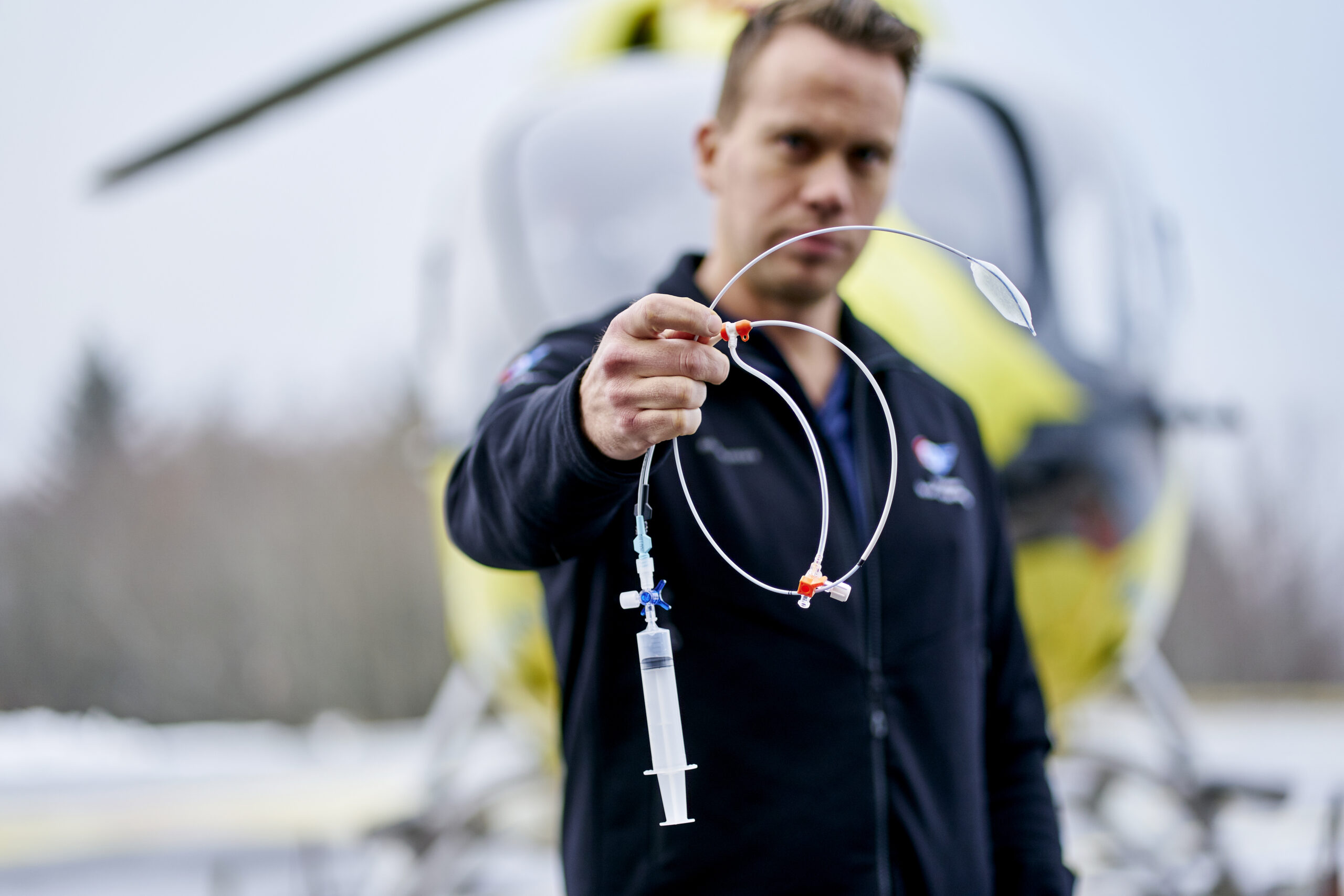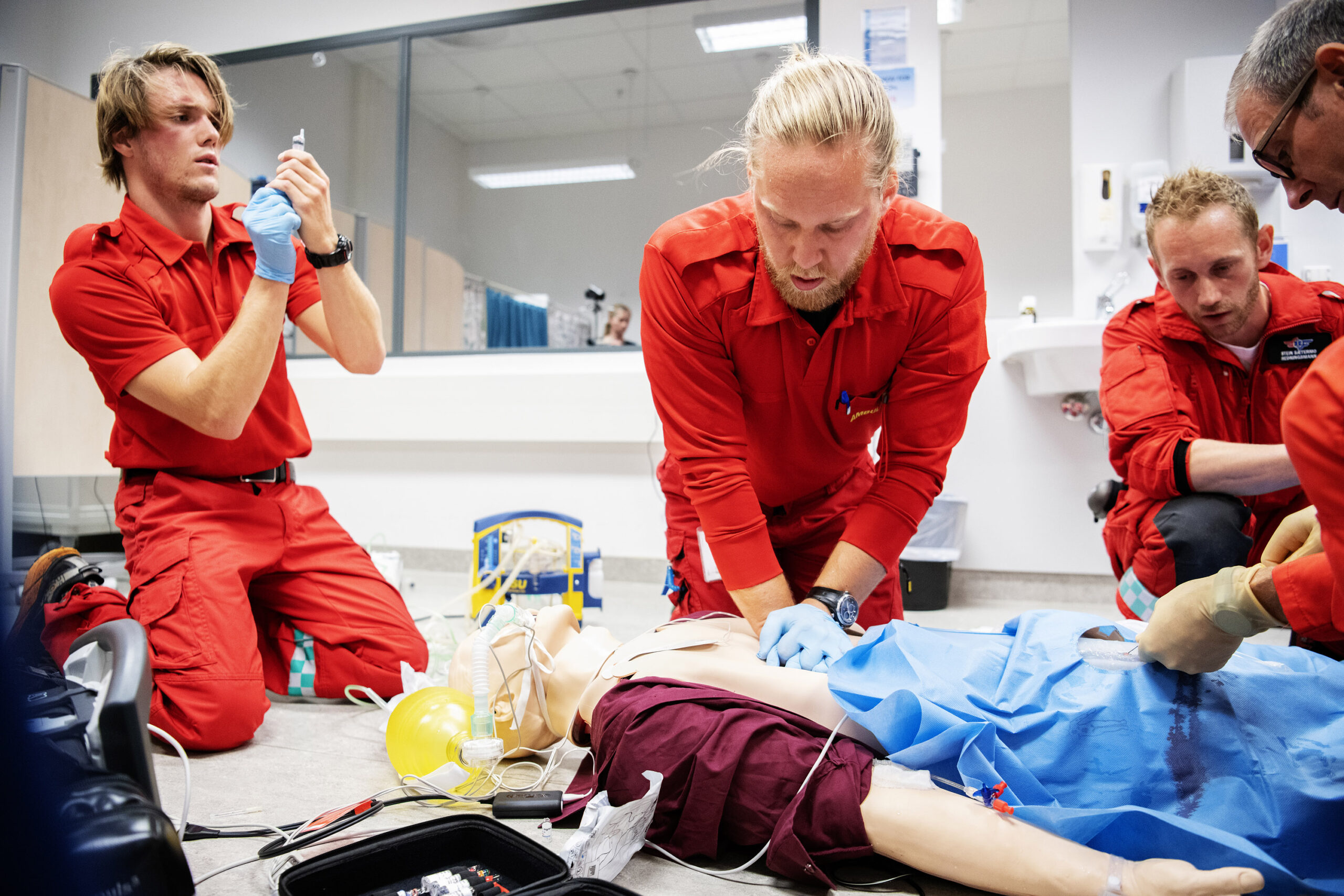Resuscitative endovascular balloon occlusion of the aorta (REBOA) is a technique where a small catheter with a balloon on the tip is placed via the femoral artery in the groin and led up to the aorta where the balloon is inflated to provide occlusion. REBOA is a well-known technique and is currently in use in management of haemorrhagic shock or traumatic cardiac arrest. In the REBOARREST Trial the patients suffer from a non-traumatic cardiac arrest and the potential clinical benefit is therefore due to redistribution of blood proximal to the occlusion. The balloon is placed in Zone 1, to provide maximum hemodynamic effect for the patients.
See more information here.

Education and training of personnel
All involved personnel are regularly part of resuscitation teams both in real life and in training scenarios. The pilot study demonstrate that the REBOA procedure is feasible in the patient cohort. The prehospital crew had participated in a structured educational program. A similar educational program will be held in all study sites and all performers (physicians and paramedics) must complete and pass this program before they can perform the procedure in study subjects.
